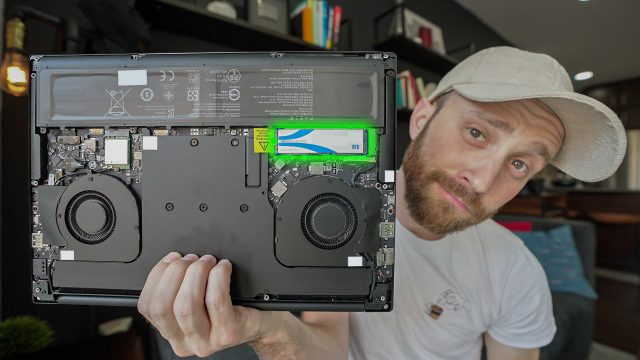Razer Blade 2016 Review: So Much Power in a Small Package (Video)
Benchmarks
Using the 3DMark Time Spy test, the Blade managed to get a score of 3531 on all the default settings (2.5K, running internally on the laptop) and managed a score of 5736 on th VRMark test meaning it’ll handle anything a Vive or Rift can throw at it basically. Oh yeah, it runs VR just fine which I have now used to impose VR on friends and family more portably than bringing my clunky desktop around with me. Bonus feature for sure.
As far as me editing my footage on it, it managed to render 4 mins of my 4.6K proress 422 footage out at YouTube’s preset for 4K in about 11 mins, and managed to render out the same length of 4.6K prores 422 footage at YouTube’s 1080P preset in about 5 mins. Compare that to my old 2013 Macbook Pro spec’d out to the max at XX and XX respectively. Again though, subscribe and stay tuned for a video just on comparing that to the latest top speced Macbook Pro, Surface Book, etc.
Battery Life
With all that power you have to question battery life and, no it will not outlast a Macbook Pro, but it isn’t too shabby either. I averaged about 4/5 hours so long as I wasn’t editing. Editing brought that down closer to 3/4 which is still long enough for me to edit a video without having to run and find a plug somewhere frantically.
Price
As far as pricing is concerned, the options for pricing are sheerly based on the screen type and storage which means that even if you buy the lowest priced model you still get the same processor, 1060 graphics card and 16GBs of RAM. So that means you can have a seriously powerful and slick laptop for as low as $1800 which is pretty insane. Then if add $300 for the higher resolution touch-enabled screen and add another $200 for the 512GB storage or $600 to get from the 256 to 1TB of flash storage. Making the top model, the one I actually bought by the way cause I need the storage for my footage, to a still not horrible price for an seriously capable portable editing machine of $2700.
Core
Lastly, there’s something else we need to mention when talking about any Razer laptop. The Core.
This casing is what most people would call an eGPU. It allows via the USB-C Thunderbolt cable port on the laptop for the laptop to utilize any graphics card you put in it as if it were it’s own. The Core is about $400 and doubles as a docking station once you put a GPU in it since you can connect your monitors to the GPU’s ports like normal and then it has a bunch of USB 3.0 ports for drives, peripherals, etc. Any editors watching already know why this is a big deal, but to explain really quick, this means that your laptop can now utilize a much more powerful desktop graphics card when plugged in, making for a very interesting editing station compared to the usual self-built desktop box. Putting in a Nvidia GTX 1080 for example, essentially doubles the power of the 1060 that is already well-capable of editing inside the laptop. Rendering that same video we mentioned before goes from 11 mins to about 5 or so for example and frame rates in games jump by about 50% or more. I think that this eGPU concept deserves it’s own separate video though, so more on that in another one coming soon but when looking at a Razer laptop you can’t help but think about just how much expandable power you can get to.
You can get the Razer Blade 2016 here.
There you go guys, what do you think of the Razer Blade 2016? And do you want me to do a video on the Core?








